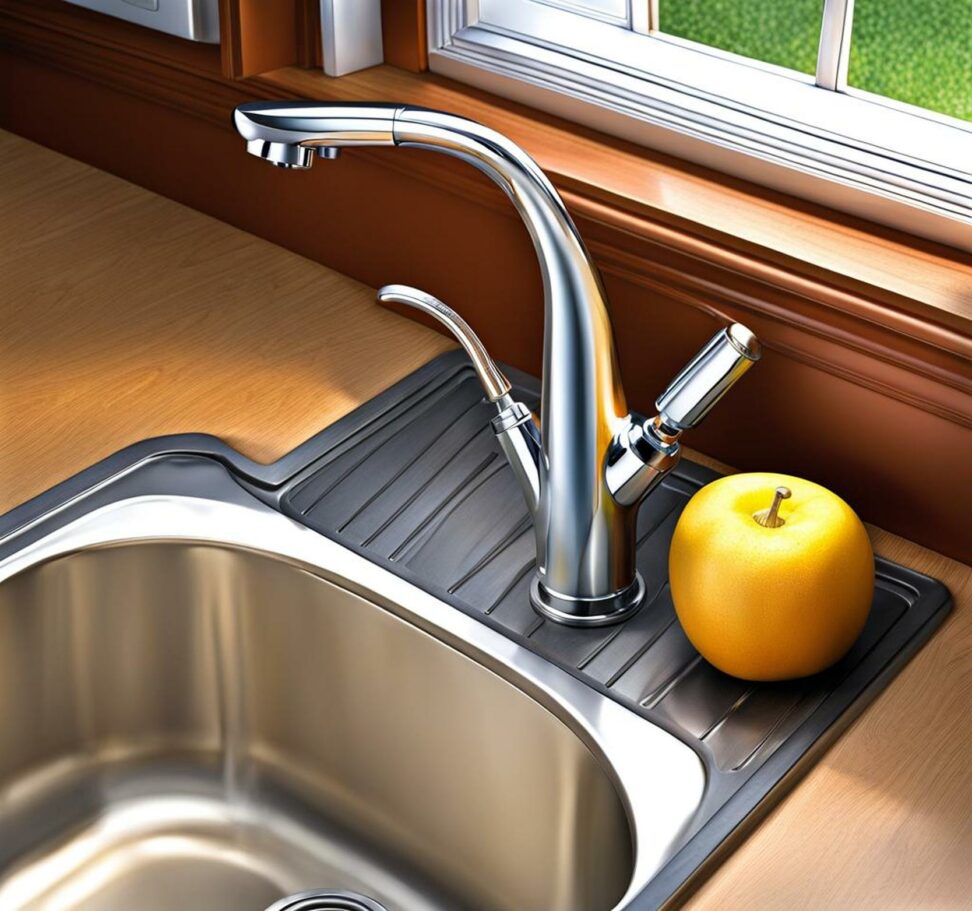Help! Water Pressure in Kitchen Sink Way Lower Than Rest of House
It's a familiar frustration - turning on your kitchen faucet only to be met with a weak, sad little stream of water trickling out. You crank the handle all the way to full blast but still just get a pitiful dribble. Meanwhile, the bathroom and outdoor faucets have nice strong pressure. What gives?
Having low water pressure from a single kitchen sink faucet is a common and fairly easily resolved issue. The localized nature of the problem points to a specific cause with that fixture rather than a whole house pressure problem. With some basic DIY troubleshooting, you can likely get your kitchen faucet's flow back up to par in no time.
Symptoms of Diminished Sink Water Pressure
There are a few clear signs that water pressure at your kitchen sink is lower than it should be:

- Weak stream of water or just a trickle coming out
- Need to turn faucet handle all the way to hot or cold to get pressure
- Problem tends to gradually get worse over time
Why the Loss of Pressure is Isolated
When water pressure drops at just one faucet and nowhere else, it indicates the problem is specific to that location. Loss of pressure throughout the house would point to a broader issue like a faulty main shutoff valve, leak in the main line, or problem with your home's water pressure regulator.
But when it's isolated to a single sink, the trouble is likely with the faucet itself, the supply lines running to it, or the shutoff valves feeding it. The good news is that makes it a fairly straightforward DIY diagnosis and repair.
Common Causes of Low Kitchen Sink Water Pressure
Here are the most likely culprits behind a decrease in water flow from your kitchen faucet:
- Clogged aerator screen
- Partially closed supply valve
- Kinked supply line
- Clogged faucet cartridge
- Old worn out shutoff valves
- Mineral buildup in galvanized supply pipes
Troubleshooting and Restoring Proper Water Flow
Finding and fixing the issue is a process of elimination. Work through these common solutions one-by-one until you hit the source of the problem.
Remove and Clean the Faucet Aerator
The first thing to try is removing the aerator from the tip of the faucet spout. The small screen inside can get clogged with sediment and minerals over time. After removing, rinse it out well to clear any debris. Screw it back on and test the water pressure.
Inspect the Shutoff Valves Under the Sink
Check the pair of shutoff valves connected to the supply lines under the sink. Make sure both valve handles are fully open. Partially closed valves restrict water flow. The valves themselves may also be old and worn out. Replacing them is an easy fix.
Check for Kinks in the Supply Lines
Follow the braided stainless steel supply lines downward from the faucet to the shutoff valves. Watch for any tight bends or kinks that could be crimping the line and reducing flow. Try straightening the lines or replacing if necessary.
Flush Out Debris in the Faucet Cartridge
Shut off water and remove the faucet cartridge. Rinse it under water to clear any trapped debris or limescale. Reinstall the cartridge and supply lines. Debris in the cartridge can obstruct water flow.
Clear Mineral Buildup in Supply Piping
Minerals from hard water can slowly build up inside supply pipes and restrict flow. Remove the supply lines and inspect them for obstructions. Soak in vinegar and use a brush to scrub away any deposits. Replacing old galvanized supply pipes may be needed.
Calling in a Plumber for Kitchen Sink Water Pressure
If you've worked through these common fixes and are still plagued by low pressure, it's time to call a professional. A plumber can diagnose and address any issues you can't resolve yourself. Plumbers also have the expertise for replacing shutoff valves or supply piping.
It's also wise to call a plumber if the low pressure problem extends beyond just the kitchen faucet to other sinks. That points to a larger household plumbing issue in need of attention.
Don't resign yourself to perpetually weak water flow from your kitchen sink faucet. In many cases, there are some simple and inexpensive fixes you can tackle on your own like cleaning the aerator, replacing valves or addressing kinked supply lines. But when in doubt, your plumber can lend a hand getting your sink's flow back to full power.